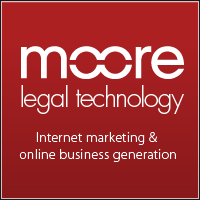 For more than 200 years, inventors and creative people have fallen victim to theft of intellectual property. Despite popular belief, intellectual property – from artwork to an innovative new product design – is not automatically protected from imitation or theft, leaving many of today’s top innovators vulnerable to theft and exploitation.
For more than 200 years, inventors and creative people have fallen victim to theft of intellectual property. Despite popular belief, intellectual property – from artwork to an innovative new product design – is not automatically protected from imitation or theft, leaving many of today’s top innovators vulnerable to theft and exploitation.
While there are certain case in which works are protected immediately after they’re completed, the vast majority of forms of intellectual property protection require you – as the creator or designer of intellectual property – to take a role in protecting and securing your own intellectual property.
There are four different forms of intellectual property protection currently used in the UK: patents, copyrights, trademarks, and design rights. Each different form of protection is used for something different – while technology may be protected by patents, creative works are generally protected by copyright.
Sometimes, intellectual property falls into more than one category. A new invention could use an iconic design and innovative new technology, making it something that could be both trademarked and protected using a patent. Sometimes, a product will be trademarked while technology used inside it will be separately patented.
If you’re interested in protecting your own intellectual property and don’t know the right place to begin, try speaking to an intellectual property lawyer. Waiting too long to protect your intellectual property puts you at risk of having it stolen or copied by a competitor, whether in business or an artistic pursuit.
Some forms of intellectual property are protected as soon as they exist, provided a few simple procedures are followed. A painting or musical composition is normally protected by copyright as soon as it’s completed, making it unnecessary to pursue any further forms of intellectual property protection.
Even this ‘automatic’ intellectual property protection requires some involvement, however. Creative works that want copyright protection need to be marked with a name and creation date, as well as a notification that they are protect by copyright, in order to be legally protected.
Other forms of intellectual property protection require the active involvement of the designer or inventor. A new patent needs to be applied for in order for a technology to be protected against theft or imitation. Patents are only issued for technology that is new – modified versions of existing technological inventions can’t be patented.
There are also limits to what a patent can and can’t protect. Inventions and designs can be patented, as can new technologies. These technologies can be non-physical – an online invention, for example, can be protected using a patent to the same extent as a physical invention.
Certain inventions can’t be protected by patents. Innovations in science – a theory, development, or equation, for example – can’t be built and used, and thus can’t be patented. Product designs can’t be protected using a patent, but can be registered and protected using design rights and trademarks to protect against imitation.
Many inventions, designs, and new products are protected using several forms of intellectual property protection. Modern smartphones, for example, might include technology that’s protected by hundreds – even thousands – of separate patents.
This article was written by Vannin Capital. Visit their website to find out more about funding a legal case.
litigationfunding.com
